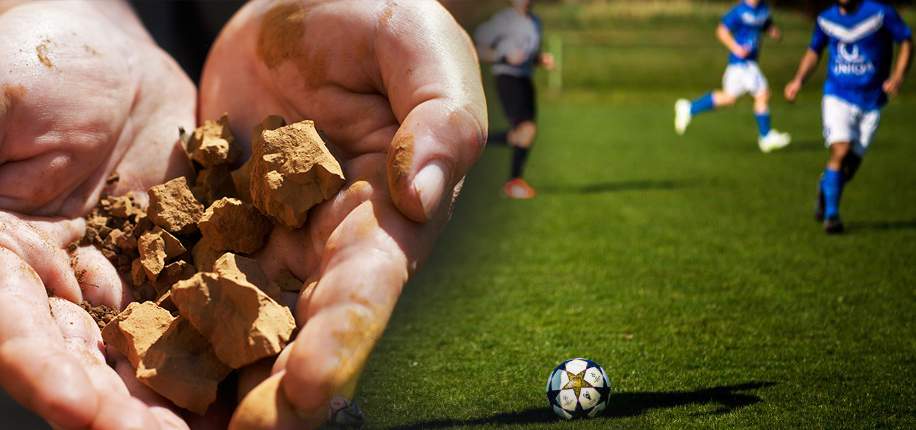A new lignin material can reduce spread of environmentally harmful microplastics
Publicerat 19 September, 2019
RenCom, one of BioPitch’s project partners, announces that they successfully have developet an environmentally friendly solution to lower the spread of microplastics in the nature due to artificial greenery. One of the main ingredients in the new material is lignin.
“We have succeeded in proving our hypothesis and have very good results. We can use the material as a filler in artificial grass on soccer fields, instead of the grind car tires used today, to reduce the risk of injury. The next step is to take this further. To test it on bigger, real, football fields”, says Christopher Carrick, CEO of RenCom.
The material that they use to replace the environmental unfriendly component contains
Processing of lignin
To create the same damping qualities on the football field as the car tires do, BioPitch uses raw materials from the forest. More specifically lignin, gravel and bioplastics.
Lignin is the trees natural glue that holds them together and give them their strength. It is a residual product at paper mills that are burned to generate energy. However, the potential of lignin is much greater. Fore example it can be used for carbon fibres, biofuel and bioplastics.
At the test plant in Bäckhammar, Sweden, they are working to refine the possibilities of lignin and allow it to be tested in many innovations. The artificial grass is one of them.
Bigger scale
BioPitch is a six-month project with big hopes for extension to try the material in a bigger scale.
To be able to create an environmentally friendly substitute to the soccer field it has taken a lot of collaboration. RenCom has been responsible for the chemistry, Rise for the material development, Svea Skog for the cave technology, the Swedish Football Association for project management and Unisport for the product development and testing of the materials. Karlstad Municipality and Stockholm City have also participated with knowledge.



